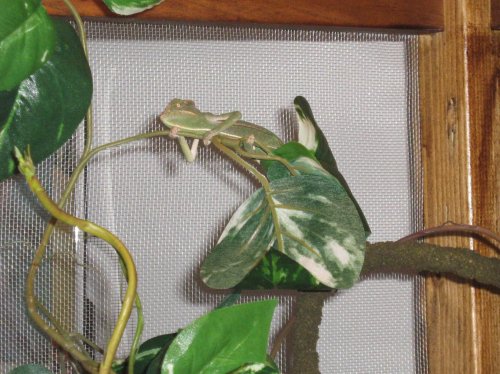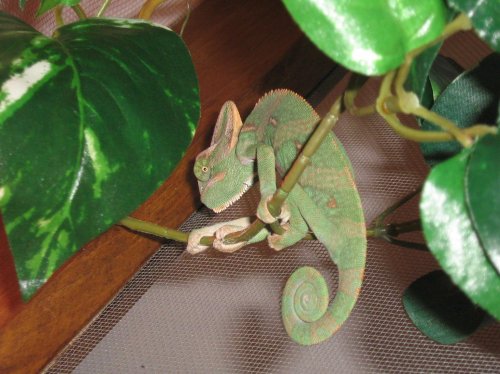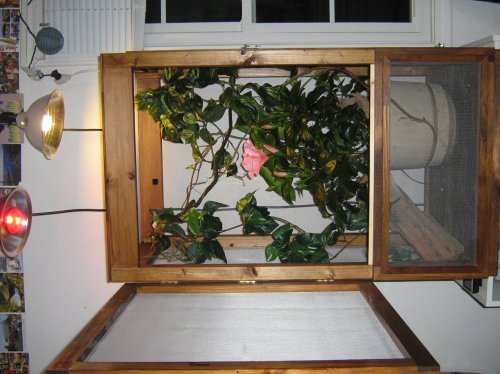scut
New Member
I'm sure it has been asked before, but my veiled just doesn't take much of an interest in water. I spray his cage probably 3+ times a day, until the leaves are dripping, but he doesn't really care. I can get him to eat carrots and lettuce occasionally, and I put a new hibiscus plant in his cage for him to munch on if he wants. He is healthy and active, so should I be too concerned? I've had him for around 4 months, with no problems.
Here are some pics of Cassius and his homemade enclosure:


This is more recent, you can see stripes coming

Here is the enclosure with the hibiscus! If you look very closely in the upper left hand corner of the cage you can see him.
Here are some pics of Cassius and his homemade enclosure:


This is more recent, you can see stripes coming

Here is the enclosure with the hibiscus! If you look very closely in the upper left hand corner of the cage you can see him.






